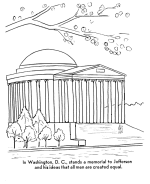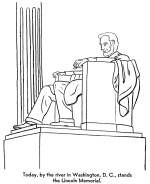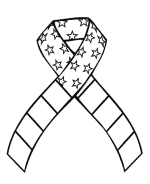



|
Following the end of the Civil War, many communities set aside a day to mark the end of the war or as a memorial to those who had died. Some of the places creating an early memorial
day include Sharpsburg, Maryland, located near Antietam Battlefield; Charleston, South Carolina; Boalsburg, Pennsylvania; Petersburg, Virginia; Carbondale, Illinois; Columbus,
Mississippi; many communities in Vermont; and some two dozen other cities and towns. These observances coalesced around Decoration Day, honoring the Union dead, and the several
Confederate Memorial Days.
According to Professor David Blight of the Yale University History Department, the first memorial day was observed by formerly enslaved black people at the Washington Race Course
(today the location of Hampton Park) in Charleston, South Carolina. The race course had been used as a temporary Confederate prison camp in 1865 as well as a mass grave for
Union soldiers who died there. Immediately after the cessation of hostilities, formerly enslaved people exhumed the bodies from the mass grave and reinterred them properly with
individual graves. They built a fence around the graveyard with an entry arch and declared it a Union graveyard. The work was completed in only ten days. On May 1, 1865, the
Charleston newspaper reported that a crowd of up to ten thousand, mainly black residents, including 2800 children, processed to the location for a celebration which included
sermons, singing, and a picnic on the grounds, thereby creating the first Decoration Day.
The first observance was in Waterloo, New York on May 5, 1866, and each year thereafter. The friendship between General John Murray, a distinguished citizen of Waterloo, and
General John A. Logan, who helped bring attention to the event nationwide, was likely a factor in the holiday's growth. On May 5, 1868, in his capacity as commander-in-chief
of the Grand Army of the Republic, a veterans' organization, Logan issued a proclamation that "Decoration Day" be observed nationwide. It was observed for the first time
on May 30 of the same year; the date was chosen because it was not the anniversary of a battle. The tombs of fallen Union soldiers were decorated in remembrance.
Many of the states of the U.S. South refused to celebrate Decoration Day, due to lingering hostility towards the Union Army and also because there were relatively few veterans
of the Union Army who were buried in the South. A notable exception was Columbus, Mississippi, which on April 25, 1866, at its Decoration Day commemorated both the Union and
Confederate casualties buried in its cemetery.
The alternative name of "Memorial Day" was first used in 1882. It did not become more common until after
World War II, and was not declared the official name by Federal law until 1967. On June 28, 1968, the United States Congress passed the Uniform Holidays Bill, which moved
three holidays from their traditional dates to a specified Monday in order to create a convenient three-day weekend. The holidays included Washington's Birthday, now celebrated
as Presidents' Day; Veterans Day and Memorial Day. The change moved Memorial Day from its traditional May 30 date to the last Monday in May. The law took effect at the federal
level in 1971.
After some initial confusion and unwillingness to comply, all 50 states adopted the measure within a few years. In 1978, Veterans Day was eventually changed back to its
traditional date on November 11. Most corporate businesses no longer close on Veterans Day, Columbus Day or President's Day, with the day after Thanksgiving, Christmas Eve,
and/or New Year's Eve often substituted as more convenient "holidays" for their employees. Memorial Day endures as a holiday which most businesses observe because it marks
the beginning of the "summer vacation season." This role is filled in neighboring Canada by Victoria Day, which occurs either on May 24 or the last Monday before that date,
placing it exactly one week before Memorial Day
|

